Top Ten Polluted Cities in the WorldAll organisms (including higher and lower intelligence species) exist in a specific habitat that encompasses all of an organism's physical and biological surroundings, as well as their interactions with it. The term "environment" refers to the totality of all land, water, and air, as well as the interrelationships between them and with humans, other living organisms, and materials. There are three types of interactions between humans and their environment: 1) Reliance All humans are reliant on the environment for food, housing, and clothing. For example, the food chain and food web help to maintain environmental equilibrium. 2) Change When living in the natural environment becomes challenging, humans attempt to modify it, such as by using air conditioners in the summer or heaters in the winter. 3) Adapt When changing the environment becomes challenging, we adapt to it by wearing seasonal clothing or growing crops according to the seasons. However, other man-made activities also cause environmental issues, such as various types of pollution that degrade the ecosystem. When the natural equilibrium of the environment is disrupted, either in quantity or quality, environmental difficulties arise, and these issues have a wide range of direct and indirect implications. Now it's critical to understand what we mean by pollution. We can define pollution as any unfavourable alteration in the environment caused by the introduction of something toxic and damaging. The undesirable materials which cause pollution are known as pollutants. Generally, natural mechanisms break down most degradable or non-persistent pollutants, such as home sewage and discarded vegetables, but some persistent or non-biodegradable pollutants do not degrade and are a source of concern for us. Types of PollutionThere are diverse kinds of pollution, including: 1) Air pollution: It is defined as the presence in the atmosphere of any solid, liquid, or gaseous substance that is hazardous to the organism. With the presence of such pollutants, the air quality index decreases, causing a variety of diseases, particularly in the eyes, nose, skin, and respiratory system. 2) Water pollution: It is caused by the presence of unsuitable elements in water, which have negative effects on the health of living beings. 3) Soil Pollution: This occurs when dangerous substances are present in the soil, reducing the soil's fertility rate. 4) Noise Pollution: Noise refers to the annoying sound produced by loudspeakers, as well as the movement of heavy vehicles such as aeroplanes and fast trains. Noise pollution can cause a rise in blood pressure, a loss of temper, and a decrease in job productivity, in addition to hearing loss. 5) Radioactive pollution: This occurs as a result of the existence of radioactive elements in the environment, such as the emission of alpha, beta, and gamma rays, which can be life-threatening. Out of these 5 types, air pollution is considered to be the most negatively impacting source of pollution across the world, causing breathing problems, irritation in eyes to damaging lungs and the worst among them all is taking away precious lives. Air Quality ParametersThe concentrations of air pollutants PM2.5, PM10, ozone, nitrogen dioxide, sulphur dioxide, and carbon monoxide are used to determine air quality. Particulate Matter (PM) is a mixture of microscopic solids and liquid particles that includes carbon, dust, and chemicals that have hazardous health consequences. PM2.5 and PM10 - with diameters less than 2.5 μm and 10 μm, respectively - are the most harmful. PM2.5 levels of less than 12 are regarded healthy, 55-150 are deemed unhealthy, and 250 or more are considered critical. Air Quality IndexThe air quality index (AQI) is a daily air quality reporting index. It's a metric that measures how air pollution affects a person's health over a brief span of time. The goal of the AQI is to educate people about what impact their local air quality have on their health. The Environmental Protection Agency (EPA) measures the AQI considering five atmospheric pollutants for which air quality standards have been designed to protect population wellbeing.
The greater the AQI figure, the more polluted the air is and the larger the health risks. Air quality information is disseminated in real-time via AQI. Calculation of AQICountries around the world use various point scales to report on air quality. The US, for illustration, has a 500-point scale, with an acceptable score ranging from 0 to 50. A hazardous rating range from 301 to 500. The 500-point scale is also used in India. Every day monitors record the biggest contaminants' concentrations. These raw values are transformed into a distinct AQI value for each pollutant following standard formulae provided by the EPA. The AQI value for that day is determined by the highest of these AQI values. List of World's Top 10 Most Polluted CitiesIQAir, a Switzerland-based air quality technology firm and a technology partner of the United Nations Environmental Program that has specialization in protection against airborne pollutants and provides air quality monitoring and air cleaning products, released the list of the World's 10 most polluted cities in 2021 in terms of AQI (Air-Quality Index). Note: This list is based on the US AQIs of the following cities recorded as of March 22 2022, so the list may vary depending upon updation.1. Wroclaw, Poland (US AQI: 171)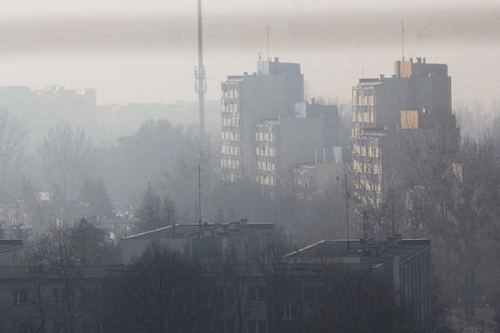
Residents of Poland are currently experiencing some of the world's deadliest air pollution, with particulate matter levels in certain areas exceeding 9 times the maximum recommended limits. Smog is a concern in Wroclaw. In the same way as Krakow and other cities are. It's particularly hazardous in the winter when warmth is essential. People, as well as measuring stations, are affected. It even stinks because the air is awful. Emissions from burners and/or furnaces are to blame. In antiquated stoves, some individuals burn rubbish and unseasoned wood. PM10 and PM2.5 particles are discharged into the atmosphere as a result of this mixture. Because Wroclaw is located in a valley, pollutants are not usually carried away by the wind. This makes sense when you consider the occurrence of temperature inversions during the cooler winter months. 2. Krakow, Poland (US AQI: 165)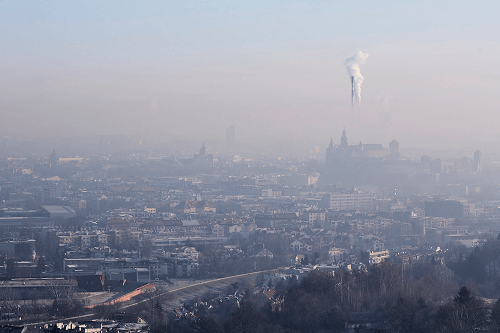
The pollution in Krakow is well-known throughout Poland. Many individuals are driving into the city witness firsthand how the originally blue sky turns black and then gets horribly hazy. The use of low-quality coal in coal-fired ovens, which are still widely used in and around the city, is one of the reasons for the Krakow haze. Another source of pollution in Krakow is transportation since many people use private transport on a daily basis for their commute into the city. 3. Mumbai, India (US AQI: 163)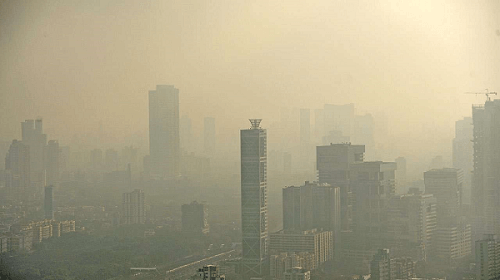
The city's current pollution levels are the result of it experiencing a second dust storm in less than two weeks. The storm erupted over Pakistan, Afghanistan, and Rajasthan's border territories on February 3, causing the inflow of dust into Mumbai city. Moreover, in January, a storm from the Middle East blew into northern Rajasthan, Gujarat, and Maharashtra, bringing dust and haze with it. Low daytime temperatures, feeble, reduced wind speed, high relative humidity, and air coolness all contribute to the poor air quality over the city. A powerful sea breeze routinely cleans the filthy air in Mumbai, a windswept seaside metropolis. However, low wind speeds have resulted in local pollutants lingering above the city not being adequately scattered. 4. Warsaw, Poland (US AQI: 162)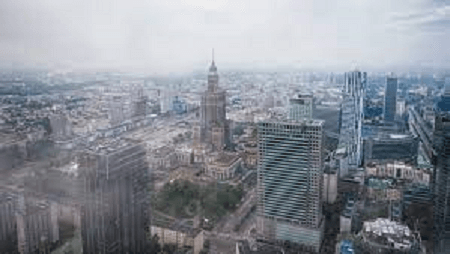
The majority of Poland's air pollution is due to the country's reliance on coal to power its houses and businesses. Poland is one of the largest coal-mining countries in Europe, only next to Germany. Poland is predicted to account for half of all coal consumption by small consumers in Europe by 2023. And the primary source of fine particle pollution is residential heating. Vehicles, like in many other nations, are a major cause of pollution. The majority of the smog produced in the city is due to automobile transport. Many automobiles in Poland are more than 13 years old that emit a large amount of exhaust. The thresholds of PM10 and PM2.5 are often breached at least twice, if not three times, in Warsaw. As per the Smog Alert calculation, a Warsaw inhabitant who breathes city air for two hours per day smokes the same of almost 1,200 cigarettes per year. 5. Belgrade, Serbia (US AQI: 159)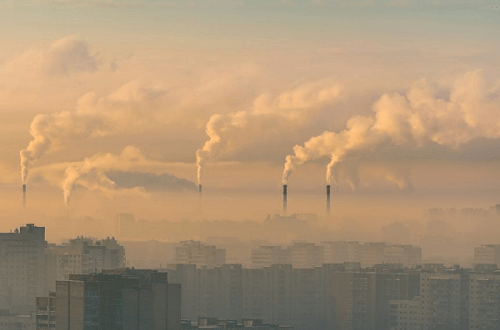
Belgrade has a variety of pollution sources, all of which contribute to the city's consistently high pollution levels. Lack of wind or rain during particular months, for example, might result in a massive buildup of fog, smog, and other hazardous air pollutants. Vehicle fumes, the burning of firewood and charcoal at households (especially prevalent during the winter months), and the intensive usage of coal and other fossil fuels at power plants and industry are all key contributors. As a result, the air is contaminated with high levels of hazardous chemical compounds as well as particulate matter, both ultrafine (PM2.5) and bigger or coarser particles (PM10). Both can cause a variety of health problems, with the tiny particles being the most dangerous because of their propensity to penetrate deep into the lung tissue and into the circulation. 6. Dhaka, Bangladesh (US AQI: 158)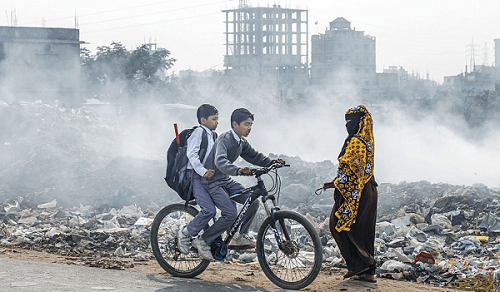
Vehicular pollution is among the major sources of air pollution in Dhaka with so many cars, motorcycles, buses, and trucks clogging the roads, it becomes unavoidable that these enormous volumes of pollution will be stopped. In addition to traffic pollution, Bangladesh is plagued by industrial pollution, with dense concentrations of factories and small-scale local enterprises functioning in the cities. Along with its large production of bricks, Dhaka's famous brick kilns are known for contributing to the city's deteriorating air quality. 7. Hanoi, Vietnam (US AQI: 156)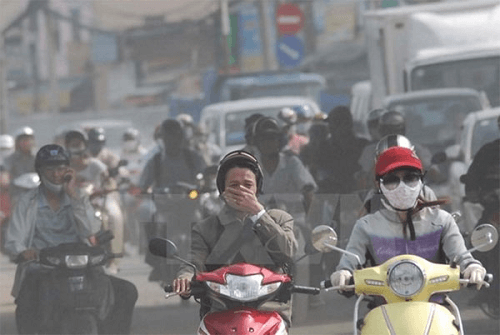
Hanoi is frequently dubbed the most-filthy city in Vietnam, if not the entire area. Fog forms on hot, humid days and hovers over the city. As a result, air circulation is controlled, preventing the spread of contaminants. Because of this phenomenon, particulates are unable to escape and become confined at ground level, resulting in poor air quality. The primary reason for the bad air quality is the large number of vehicles that enter the central city every day. 8. Delhi, India (US AQI: 155)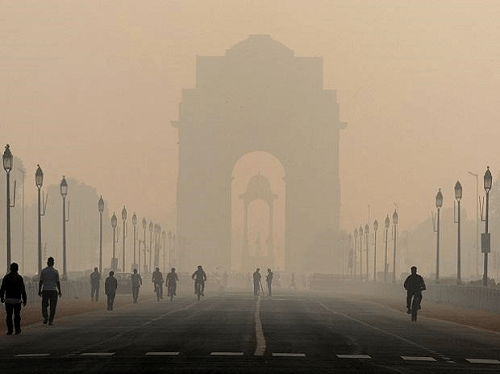
Every year, a heavy haze blankets New Delhi, the capital of India. Authorities have had to close schools at times when the situation gets so awful for the 20 million Delhi citizens to bear with the toxic environment. The concentration of PM2.5 particles in New Delhi, which can harm people's lungs, is 12.5 times the WHO's permissible levels. During the winter, when farmers burn stubble left in their agricultural fields, the toxic cloud goes extremely terrible. Soaring levels of air pollution in Delhi have generated fears of a public health crisis exacerbated by a poisonous mix of smoke from nearby field fires and the city's inherent pollution sources, such as automotive emissions. All of these factors together contribute to the hazardous air quality levels in New Delhi that makes it top this not-so praise-worthy list at times. 9. Kuwait City, Kuwait (US AQI: 153)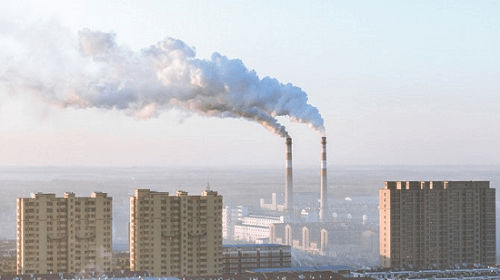
The major cause of pollution in Kuwait City is its oil industry. The different processes involved in the extraction and export of the oil have been polluting the city. In the past, there have been instances where oil has caught fire in its storage facilities proving disastrous for both human health and the environment. Along with the economic growth, the city has seen a quick rise in urbanization that has played its part in deteriorating the already worse air quality. Besides, the frequent sandstorms release fine particulate matter that is capable of damaging the lungs of people who breathe them in. 10. Poznan, Poland (US AQI: 153)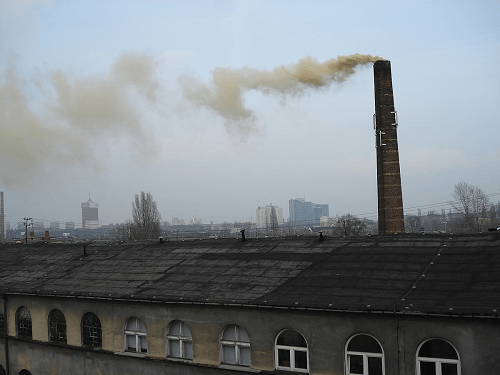
Poznan experiences air pollution from a variety of sources, including automobile emissions, industrial pollutants, and even domestic charcoal and wood burning. Moreover, most of the vehicles in the city run on outdated motors or engines. This produces more smoke and fumes. Fine particulate matter emitted from building sites, soot and haze generated from industrial regions, and power plants are all causes of pollution in Poznan. World Air Quality Report 2021Recently, IQAir has released the "World Air Quality Report 2021," in which Delhi topped the ignominious list by being the most polluted capital city in the World for the fourth time in a row. In contrast, there were as many as 63 cities of India out of the 100 most polluted cities in the World. In addition, no country met the WHO's air quality benchmark in 2021, according to the report. The complete list of 50 polluted cities is as follows:
Conclusion and Way ForwardAir pollution is now recognized as the World's most serious environmental health concern, responsible for eight million fatalities per year. Many ailments, including asthma, cancer, lung diseases, and cardiovascular diseases, are triggered or aggravated by air pollution. With the rapid pace of urban development and the increasing density of metropolitan settlements, it is more important than ever to keep global pollution levels under control. Measures to be taken1. Government's Role:After discussing the situation of different countries in terms of pollution levels, we can conclude that the government's role in each country is also important in this regard and that they must take measures to address environmental concerns in their own country, such as: A) Increase the number of ways to generate renewable resources. B) Make legislation to reduce air pollution pollutants C) Check transplantation vehicles to see if they are low emission vehicles D) Instead of boosting the automobile industry, infrastructure to facilitate pedestrian paths movement should be constructed. 2. The role of civilians of the nation:Because indoor air pollution is a concern and contributes to pollution levels, the role of civilians in one's country is also significant. For example: A) They must utilize air purification and filtration system whenever possible. B) They must avoid using wood burners and instead rely on electric appliances to cook. C) They must monitor the air quality report on a daily basis and use masks to avoid serious lung problems. D) They must ventilate their interior air environment on a regular basis when pollution level is low outside. 3. Other measures include:A) Since health is wealth, people should eat healthy foods high in Vitamin C and E to enhance their immunity and avoid the negative effects of air pollution. B) Second, we must drink plenty of fluids and water to keep our bodies detoxicated on a regular basis. C) Follow the greener procedure of garbage recycling and raise community awareness about the consequences of air pollution.
Next TopicTop 10 Hatchback Cars in India
|
 For Videos Join Our Youtube Channel: Join Now
For Videos Join Our Youtube Channel: Join Now
Feedback
- Send your Feedback to [email protected]
Help Others, Please Share









